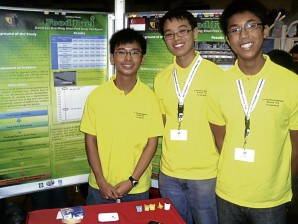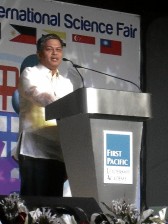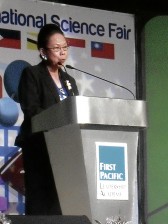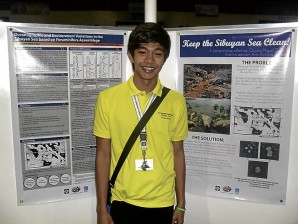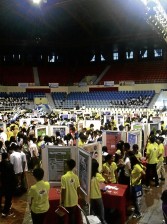1st Philippine International Science Fair
The apoptotic activity of lagundi extract on lung cancer cells, phytochemical screening and the antimicrobial activity of santan flowers, artificial lighting sources for indoor plants, an automatic flood detection and warning device … believe it or not, these inventions and studies were done by high school students.
More than five dozen researches and innovations from eight Asia-Pacific countries were showcased at the recent First Philippine International Science Fair in Antipolo City.
Student scientists from Bangladesh, Brunei, Malaysia, Singapore, South Korea, Taiwan-Republic of China, Thailand and the Philippines attended the three-day event with the theme “Building a Culture of Science.”
The Philippine Science High School (PSHS) System and the First Pacific Leadership Academy, with the Department of Science and Technology (DOST) and the Department of Education (DepEd), organized the fair “to nurture excellence in science and technology among students, to recognize and affirm the science and technology endeavors of students and to contribute to the development of a culture of science among the youth.”
There was also a smaller community fair where students discussed their scientific findings with people who might be potential investors or beneficiaries of their studies but were not
well-versed in science and technology. This was meant to “bring science to ordinary people.”
Education Secretary Armin Luistro said, “What we need are scientists who understand deeply our scientific concepts … and are able to translate these joyfully and simply for the rest of the world, most especially their peers.”
He expressed the hope that the Philippines would be able to build this culture of science in every elementary school, adding it was worthwhile to “reflect on the relevance of science in everyday life.”
Dr. Josette Biyo, PSHS System executive director, said the country’s science schools had already established a culture of science. But as much as she wished all public schools would be science-centered, the budget was not enough to cover the cost of facilities and equipment needed to support the program. She added that there was a lack of competent teachers.
Commission on Higher Education Chair Patricia Licuanan hoped “to entice more students” to take up science, engineering and mathematics courses in college, through fairs and scholarships. She said science and technology courses in the Philippines were “undersubscribed” and “wanting of enrollees.”
The project “Food Fuel” by graduating students Daniel Lee Dao Ming, Khoo Peck Seng and Tan Kyven of the Anglo-Chinese Junior College in Singapore developed biofuel from food scraps.
The students explained that Singapore was a major importer of fossil fuel from neighboring countries so they wanted to give the island nation an alternative source of energy.
Explaining the process through posters on panel boards, Seng said it took them a month to extract bioethanol from carbohydrate-rich food.
Mining effects on sea
A graduating student from the PSHS-Main Campus turned into an instant celebrity as people listened to him explain his research “Oceanographic and Environment Variations in the
Sibuyan Sea during the Holocene Based on Foraminifera Assemblage.”
Quinito Miguel Baula, 16, told students and professionals his study would serve as “baseline [data on] the Sibuyan Sea right now for future investigative research that will study the effects of mining.”
Baula, who spent more than 200 hours on his research, was assisted by his research adviser Ana Victoria Lloren. His study found that, as of now, “the Sibuyan Sea is still OK.”
Close to 3,000 students from public high schools attended the community fair to interact with and learn from their peers’ scientific findings and research work.
Sessions with experts
The First Philippine International Science Fair also included a science congress. At their sessions with the experts, students got a glimpse into the lives of scientists as professionals. Participating students also learned the techniques of the scientific community in presenting research studies.
The first day also featured a study critique to teach students how to evaluate properly the work of their peers, as well as a student summit where they shared their experiences during the research process. Team-building activities followed.
Also at the event were Rizal Gov. Casimiro Ynares III, Science Undersecretary for Scientific and Technological Services Fortunato de la Peña, Smart Communications cofounder and chief wireless advisor Orlando Vea, IdeaSpace Foundation president and cofounder Earl Martin Valencia and Maynilad senior vice president for corporate human capital and organizational development Roy Evalle.











